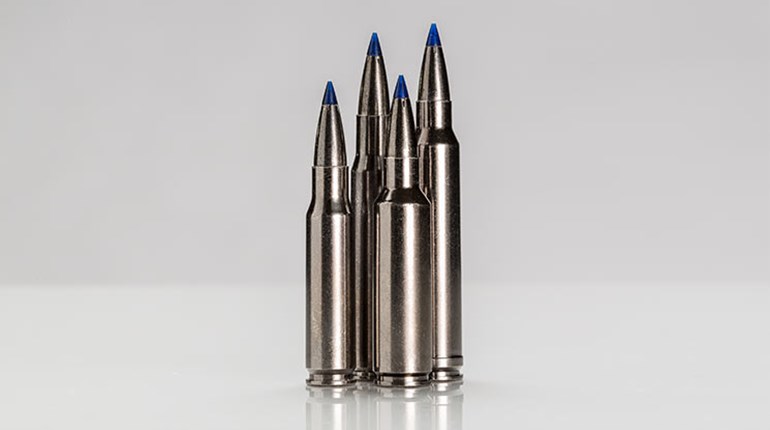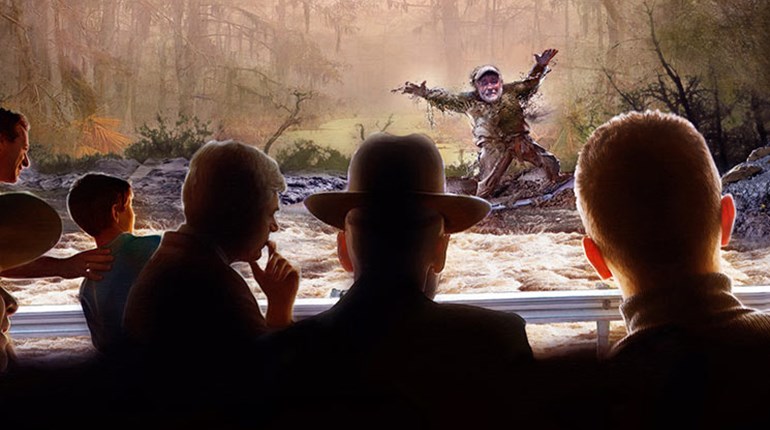Big-bore, dangerous-game rifles are cool—unless you shoot them a lot.
They kick like a mule that has just been castrated. While that’s part of their mystique, it wears thin after a few shots.
The thing is, if you are going to hunt dangerous game with your big-bore rifle, you need to shoot it—a lot. When you are after something that can claw, stomp, bite or gore you to a bloody and premature death, you need to know your rifle like you know your right hand. When it all hits the fan and something very big with serious anger issues is focused on turning you into a red puddle, your brain is going to fail you. Your fine motor skills are going on vacation, and you will have to rely on muscle memory and the lizard lobe in your head to win the fight. That means you'll need to know your rifle so well that the panicked, nonfunctioning husk your body has become can run the rifle on autopilot and shoot the critter bent on your destruction. That only happens with practice. Lots and lots of practice.
But then that recoil thing becomes a problem. One or two shots are pretty cool with that .458 Lott, but 20 or 30 make you start to hate the gun. I once did 75 in a single morning and woke up the next day looking like I used my shoulder to beat a brick wall to death.
If you hate the rifle, you won’t practice. If you don’t practice, you get stomped.
Don’t get stomped, get Nyati.
Nyati means Cape buffalo in Swahili, but it’s also the name of an ammunition company in Wisconsin. Ed Hammond is the owner, and he is focused on big-bore ammo. His company lives up to its name by loading reduced-recoil practice ammo for dangerous-game rifles. It offers a wide range of low-velocity, low-recoil ammo for most of the common big-bore cartridges.
Nyati loads the ammo with Barnes bullets, including solids. Another important reason why you should shoot your rifle a lot is to make sure it runs with no problems. Often a hunter will practice with cheaper ammo, only to discover at the wrong time the solids he is hunting with have feeding issues. But if he practices with the same bullets he’s going to use when hunting, like the Barnes TSX and Banded Solid loaded by Nyati, he’ll be able to identify and correct any potential feeding issues before something is trying to write his obituary in the dirt using his head as the pen.
The chart at the right lists the foot-pounds of recoil generated by Nyati loads in a 10-pound rifle. But felt recoil is a different critter. It’s hard to get a scientific measure of the recoil a shooter feels at the rifle. There are a lot of variables, including stock design, so every rifle will be a bit different in terms of felt recoil. Still, I did a test by alternating the low-recoil Nyati ammo with full-power loads in two different rifles and with four shooters.
One undeniable truth was little doubt existed about which cartridge went off when we pulled the trigger. There was a marked difference in recoil. How much? We all agreed the perceived recoil from the Nyati low-recoil .458 Win. Mag. load was about half of that from the full-power round, and perhaps the difference was even greater between .375 H&H Mag. loads. In fact, in my Winchester Model 70 .375 H&H rifle, the low-recoil ammo was, as one shooter put it, “just about nothing.”
Hunting dangerous game in Africa is a very expensive undertaking. But while you are saving your dollars for the big trip to the Dark Continent, why not hunt deer, elk, bear or hogs with your dangerous-game rifle? Nyati also offers a line of intermediate-velocity ammo that’s perfect for the job. I tested intermediate loads in .458 Win. Mag. with a 350-grain Barnes TSX and .375 H&H Mag. with a 300-grain Barnes TSX, both of which have an advertised muzzle velocity of 2000 fps. These are ideal ballistics for using your dangerous-game rifle to hunt deer in the back 40 and provide more than enough horsepower to flatten an elk.
My Winchester Model 70 in .375 H&H averaged .63 inch for three, three-shot groups at 100 yards with the intermediate load. While the rifle has always been a good shooter, I think this is the most accurate factory ammo I have tested in it. The muzzle velocity was 2019 fps, and I found the load produced an impact that was 6.5 inches lower than my zero for full-power ammo. That’s not an issue, as you need to rezero a rifle anytime you switch ammo.
With the .458 Win. Mag. intermediate load, the muzzle velocity was 2149 fps. The group average was 2.2 inches—not the best my rifle can do, but not the worst either, and well within the range of expected accuracy from factory ammo for this gun.
These two options from Nyati boost the fun of shooting your dangerous-game rifle as well as expand hunting opportunities. It’s big-bore ammo for all occasions.
Nyati Big Bore
Low RecoilCaliber: various, from 9.3x74R to .700 NE (.375 H&H Mag. and .458 Win. Mag. tested)Velocity: 1300 fps (.375 H&H Mag.); 1100 fps (.458 Win. Mag.)Bullet: 300-gr. Barnes Banded Solid (.375 H&H Mag.); 500-gr. Barnes Banded Solid (.458 Win. Mag.)MSRP: $80 per box of 20 (.375 H&H Mag.); $110 per box of 20 (.458 Win. Mag.)
Intermediate RecoilCaliber: various, from 9.3x74R to .700 NE (.375 H&H Mag. and .458 Win. Mag. tested)Velocity: 2019 fps (.375 H&H Mag.); 2149 fps (.458 Win. Mag.)Bullet: 300-gr. Barnes TSX (.375 H&H Mag.); 350-gr. Barnes TSX (.458 Win. Mag.)MSRP: $80 per box of 20 (.375 H&H Mag.); $110 per box of 20 (.458 Win. Mag.)
Recoil*
.375 H&H Mag.Full-Power Load: 29.9Nyati Intermediate-Recoil Load: 16.3Nyati Low-Recoil Load: 6.4
.458 Win. Mag.Full-Power Load: 39.2Nyati Intermediate-Recoil Load: 22.0Nyati Low-Recoil Load: 16.9
*Measured in ft.-lbs.; 10-pound rifle



































